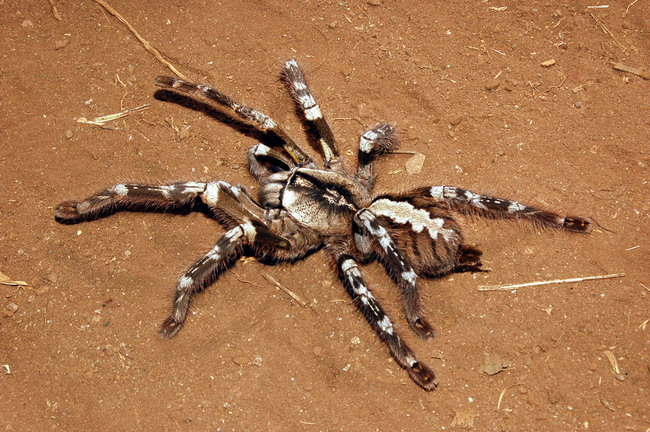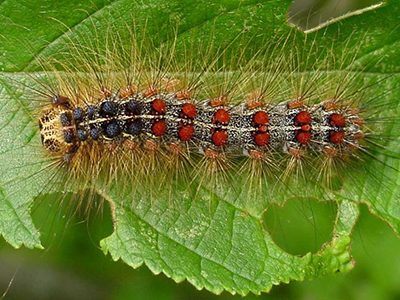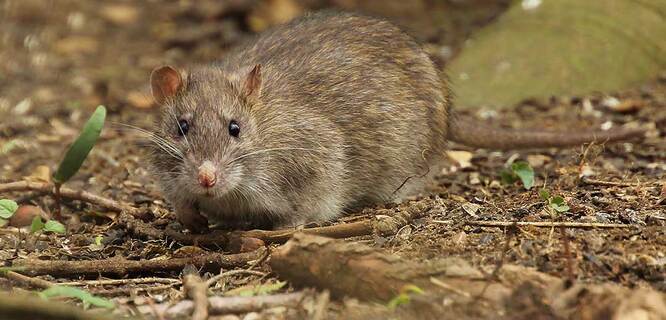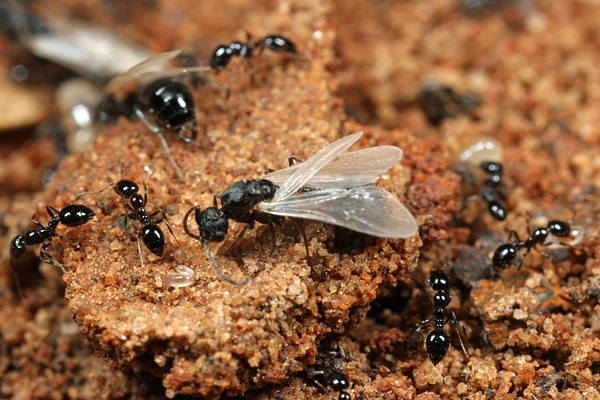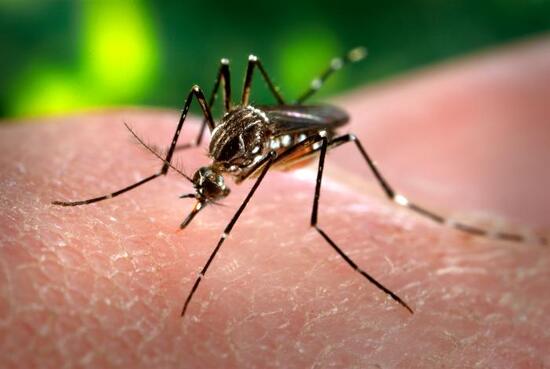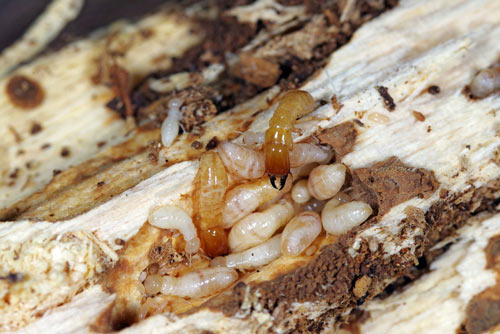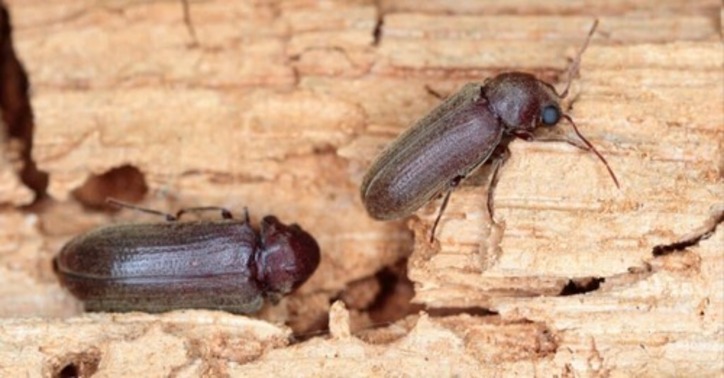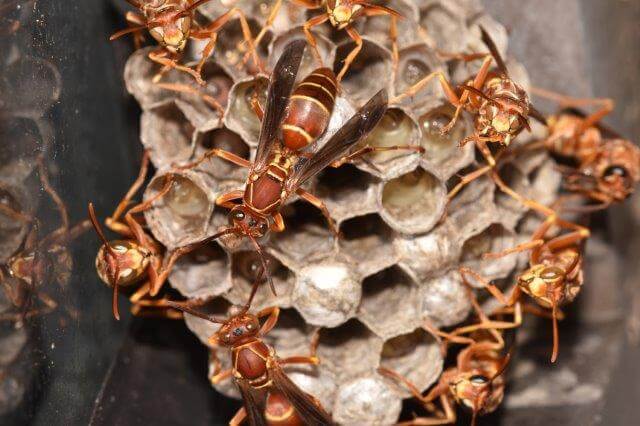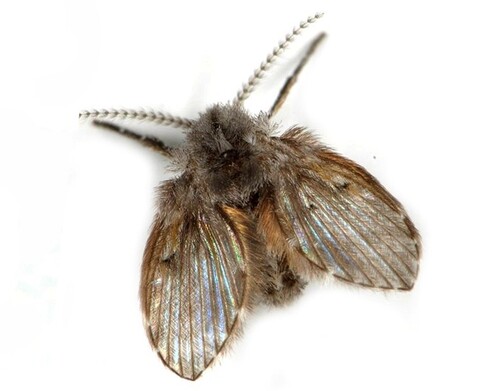Indian ornamental tree spider, is one of the most popular arboreal tarantulas for amateur collectors. P.regalis parallels that of many arboreal spiders. In the wild individuals live in holes in tall trees where they make asymmetric funnel webs. Their primary prey consists of various flying insects, which they seize in flight and paralyze. The venom […]
Gypsy moth caterpillars are easy to identify, because they possess characteristics not found on other leaf-feeding caterpillars. They have five pairs of blue dots followed by six pairs of red dots lining the back. In addition, they are dark-colored and covered with hairs. Young caterpillars primarily feed during the day whereas the older caterpillars feed […]
Crickets are pests for a variety of reasons. They sometimes find their way into homes, becoming a nuisance between their loud chirping and tendency to attack clothing and other fabrics throughout the house. Male crickets produce musical chirping sounds by rubbing a scraper located on one forewing along a row of about 50 to 250 […]
Interesting Facts About Rattus 1.More than 51 species of rats that have been discovered 2.A rat can fall as far as 50 feet without being injured. Rats can jump 2 feet in the air from standing position 3.The tooth enamel of rats is said to be stronger than steel. 4.Rats have been known to restart […]
Flying ants are alates, mostly the matured Queens and males of ant, An ant colony can only expand so much. At some points a new queen will need to strive out on her own to begin a new colony, growing wings and flying enables to do this. They are most commonly found nesting in wet, […]
Aedes aegypti is known to transmit dengue virus, yellow fever virus, chikungunya virus, and Zika virus. Aedes is dark coloured and has typical white markings on the legs and lyre like markings on the thorax. It is significantly smaller in size, being only 4 to 7 mm long. In this species, the female mosquitoes are […]
Drywood termites can often escape detection, as they live deep inside wooden structures. Compared to other species, their colonies are very small and often spread out within the house. Drywood termites will colonize in attics where temperatures may exceed 131 degrees Fahrenheit. There, they will locate their colonies in wood that has more favorable temperatures, […]
The common furniture woodworm beetle is a wood boring beetle measuring 2.7-4.5 mm in length and has a brown ellipsodial body with a pronotum. Furniture beetles are attracted to wood. They can be brought into the home through infested furniture or timber, or they may naturally seek out damp or moist wood on their own. […]
Paper wasps are semi-social insects, they will sting to protect their colony, releasing toxins that can be harmful. Wasps can sting repeatedly causing pain, swelling and whole-body effects that can trigger allergic reactions. They do not store food and they eat insects and spiders. Forager wasps bring morsels of food back to the nest from […]
Sewer flies are small, grey pest, they come from organic buildups in any area where there is standing water, breeds in the buildup in pipes and enters the bathroom through a faulty seal between the toilet and sewer flange. This might indicate they are breeding lower down in the pipe and flying upwards. sewer flies […]

